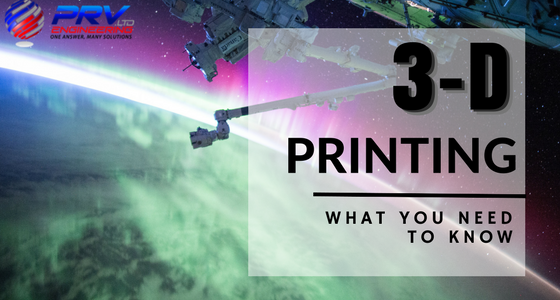Futurologist Jeremy Rifkin claimed that 3D printing is the beginning of a third industrial revolution. This means it would subsequently succeed the production line assembly that dominated manufacturing which started in the late 19th century. What if he’s right? Imagine printing a new valve for a broken tap or a brake disc for your car. In contrast, perhaps something simpler like a new plate when your little ones drop the good dishes. The possibilities are essentially endless given the right materials and machines.
Let’s take a closer look. The creation of a 3D printed object is achieved using additive processes where an object is created by laying down successive layers of material until the object is created. Each of these layers can be seen as a thinly sliced horizontal cross-section of the potential object. Objects can be of almost any shape or size and are produced using digital model data from a 3D model or another electronic data source. These sources can be an Additive Manufacturing File (AMF) file.
How Does 3D Printing Work?
Everything starts with making a virtual design of the object you want to create and this can be done with a CAD (Computer Aided Design) file. This file is created using a 3D modeling application/software. A 3D scanner is therefore used to copy an existing object and can also make a three dimensional digital copy of almost any object.
To get started, you need to prepare a 3D model before it’s ready to be printed in three dimensions. This is what we call slicing. Here the 3D model is divided into horizontal layers upon layers which require special software. A 3D model can sometimes be sliced from within the 3D modeling software application but often they require a special slicing tool for a specific 3D printer.
Once the 3D model is sliced, it’s ready to be fed into the 3D printer. This can be done using USB, SD or WiFi, It mainly depends on what brand and type of 3D Printer is being used.
Applications of 3D Printing
3D printing can be used to create a multitude of products, from car parts, smartphone cases components, fashion accessories, medical equipment to even artificial organs.
The first functional 3D printer was developed by Charles “Chuck” Hull back in 1984 but technology has come a long way since then. Manufacturing and aerospace organizations, in particular, utilizes 3D printing and have saved billions in manufacturing costs by using 3D printed parts.
Medical Sector – 3D Printed Organs
3D printing technology can now print organs from a patient’s own cells. This means patients no longer have to wait for donors or be concerned about donor matching. In the past, hospitals implanted structures into patients made by hand. 3D printing has drastically improved this process.
Automotive 3D Printing
Companies like Ford, General Motors and a few others have used 3D printing for a number of applications. Already in 2014, General Motors used stereolithography, specialized software and laser sintering to build car parts. It was mainly used to improve build quality of the Chevrolet Malibu. They used rapid prototyping for the floor console and also 3D printing for the front fascia. This improved the design and as a result, better testing aerodynamics in the wind tunnel.
Ford used 3D printing even more and it was instrumental in making the Ford Explorer and EcoBoost engines. They produced prototypes of many parts including cylinder heads, brake rotors, shifts and vents.
3D Printing in Aerospace
Aerospace engineers use Fused Deposition Modeling (FDM) Technology for prototyping, tooling and part manufacturing. FDM, also known as fused filament fabrication (FFF), works with high-performance thermoplastics on an “additive” principle by laying down material in layers. Plastic filaments or metal wires on a large coil unwinds and supplies material to produce a part.
3D printed parts are currently widely used in Unmanned Ariel Vehicles (Drones) and on Tornado fighter jets among others. The International Space Station also has its own portable on-board 3D printer measuring 25cm on each side and weighing just 5,5kg. This portable printer can print objects made from polylactic acid (PLA) made from renewable resources and also bio-compatible and bio-degradable.
What’s next for 3D printable items? Leave your comments in the section below if you have an interesting story or design concept.
PRV Engineering offers premium AM services for a wide range of clientèle across a vast array of industries. From one off design work to ongoing part manufacture; if you need engineering solutions, contact PRV Engineering.


Recent Comments